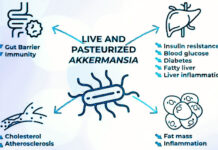EFSA’s green light to mung bean protein extracts as novel foods, as proposed by U.S. industry Eat Just, which uses them to produce the so-called vegetable egg. VegetableAlt Egg will thus soon land on the European market, following those in Asia and the United States where the ingredient has already been authorized since 2017. (1)
Mungo bean, resilience and food security
The mung bean(Vigna radiata) is one of the most important legumes for human nutrition, although to date little known in the Old World. Its cultivation occupies more than 6 million hectares, accounting for 8.5 percent of the total area devoted to legumes planetwide.
It is a summer crop with a rapid development cycle (70-90 days), therefore resilient and suitable for growing in semi-desert conditions. As in Asia Minor and Central Asia, from Kazakhstan to Pakistan, India, and Bangladesh. As well as in the arid regions of southern Europe and the warm regions of Canada and the United States.
Consumption of mung bean is especially rooted in Asia, where its seeds and sprouts are used to season pastas, noodles and soups. As well as to produce snacks and sweets. Instead, in Europe and America it is used, mainly, in the fresh shoot form.
Mung bean, nutrition and health
The nutritional virtues of mung bean pertain to its richness in protein and dietary fiber, vitamins and minerals. Added to this are significant amounts of bioactive compounds such as polyphenols (vitexin and isovitexin in particular), polysaccharides and peptides (with hydrophobic low-molecular-weight amino acid residues).
Mung bean thus has an important tradition of consumption, but also a long history of use as a traditional medicine. Scientific literature reports to its contribution to improve hyperglycemia, hyperlipemia and hypertension, prevent cancer and melanogenesis. In addition to hepatoprotective, immunomodulatory, and cognitive function-stimulating activities (2,3).
Mung bean protein extracts
The procedure for authorization as a novel food, under Reg. EU 2015/2283, concerns a protein extract from mung bean seed obtained by mechanical extraction in a manner similar to that followed for other legumes (e.g., peas).
The seed is treated at high temperatures, prior to extraction, so as to reduce moisture and remove unpleasant odors. It is then ground to allow the proteins to be extracted in aqueous solution, which, stripped of fiber and starch, are pasteurized and stabilized by spray-drying.
Novel food, composition and characteristics
Protein-which characterizes and makes up the bulk of novel food-is well digested and able to provide sufficient amounts of essential amino acids, with the exception of methionine and cysteine, which the mung bean (like other legumes) lacks instead. The contribution of minerals, which should be controlled to avoid excesses in the diet, is considered negligible compared to the normal diet. The nutritional safety of the food is optimal and stable over the shelf-life due to the maintenance of the amino acid composition.
The main anti-nutritional factors contained in legumes-the trypsin inhibitors and lectins-have much lower values and biological activities than soybeans, due in part to the heat treatment to which the product is subjected. Other factors-such as phytic acid, tannins, and cyanogenic glycosides-are also reported to be comparable to or lower than other legumes. Finally, no problems were recorded in the analysis of physical (heavy metals), chemical (pesticide residues) and microbiological contaminants.
Mung bean protein extracts, intended uses
The intended uses for mung bean protein extracts fit into the category of animal protein substitutes (e.g., meat, fish, milk, eggs), or for making similar products derived from them (e.g., gelatin). In fact, mung bean proteins have proven to be more versatile than soybean proteins in terms of functional characteristics and thermal stability (4) in making plant textures of great technological interest.
Novel Food applied for in the EU is intended for the general population, excluding infant and follow-on formulas. Uses for functions characteristic of some food additives are currently excluded (e.g., clarifying function in beverages, curiously similar to that traditionally provided by egg-derived albumin).
Eat Just, JUST Egg
JUST Egg
is the innovation launched in international markets by Eat Just (San Francisco, California, USA). A ‘vegetable alternative to egg,’ with seemingly similar organoleptic properties and equal versatility in cooking. Alt Egg – on a par with
Alt Meat
e
Alt Fish
– is presented as a ‘sustainable’ alternative to animal products. Because of savings on CO2 emissions (-93%), as well as land (-86%) and water consumption (-98%).
Imitation of nature, however, in this as in other cases, requires the use of various food additives. Just Egg Folded‘s ingredient list follows, with our explanatory notes in square brackets.
‘Water, mung bean protein isolate, canola oil from mechanical pressing dehydrated onion (<2%), gellan gum [E418, thickener], natural extracts of carrot and turmeric [coloring foods], natural flavors, potassium citrate [E332, acidity corrector], salt, soy lecithin [E322, emulsifier] sugar, tapioca syrup, sodium pyrophosphate [E451, leavening agent], transglutaminase [enzima], nisin [E234, preservative]. Contains soy.’
Toxicity excluded
No toxicological study was considered necessary for EFSA’s risk assessment, for three essential reasons:
– mung beans have been widely consumed, for millennia in Asia and for decades on the American and European continents. A ‘safe consumption history’ is thus demonstrated,
– proteins are extracted exclusively through mechanical processes, without any genetic engineering or chemical modification,
– protein (mainly reserve protein) is structurally similar to that of other legumes (e.g., soybean, lupine, and pea).
Allergenicity excluded
Unlike soybean, which is among the allergens subject to specific labeling duty, (5) mung bean has demonstrated high anti-allergenic action. Its hydrolyzed proteins and peptides are therefore also suitable for use as hypoallergenic ingredients in various foods, including protein formulations and supplements. (6) Although this type of use could result in re-evaluation by EFSA.
Mung bean, prospects
The use of mung bean protein extracts undoubtedly represents a prospect of great interest in fulfilling food security and nutritional safety needs. Even outside the narrow scope of application of Alt Egg.
Eat Just
however, required an exclusive novel food authorization, as in several other cases. Other operators who wish to use mung bean protein extracts will therefore have to activate additional procedures.
Our team is available to conduct outsourced research and development activities aimed at introducing Novel Food and innovative ingredients to the EU, UK and other markets, in compliance with applicable regulations.
Dario Dongo and Andrea Adelmo Della Penna
Notes
(1) EFSA NDA Panel et al. (2021). Safety of mung bean protein as a novel food pursuant to Regulation (EU) 2015/2283. EFSA Journal 19(10):6846, https://doi.org/10.2903/j.efsa.2021.6846
(2) Hou, D., Yousaf, L., Xue, Y., Hu, J., Wu, J., Hu, X., Feng, N., & Shen, Q. (2019). Mung Bean (Vigna radiata L.): Bioactive Polyphenols, Polysaccharides, Peptides, and Health Benefits. Nutrients, 11(6), 1238. https://doi.org/10.3390/nu11061238
(3) Antifungal and antibacterial properties of relevance to food technology are also added. Thanks to trypsin inhibitors, mung bean can be used to reduce proteolysis and increase the shelf-life of many foods. V. Yi-Shen et al. (2018). Mung bean proteins and peptides: nutritional, functional and bioactive properties. Food & Nutrition Research 62:1290, http://doi.org/10.29219/fnr.v62.1290
(4) Brishti et al. (2017). Evaluation of the functional properties of mung bean protein isolate for development of textured vegetable protein. International Food Research Journal 24(4):1595-1605
(5) Reg. EU no. 1169/2011, Annex XII
(6) Budseekoad et al. (2019). Anti-allergic activity of mung bean (Vigna radiata (L.) Wilczek) protein hydrolysates produced by enzymatic hydrolysis using non-gastrointestinal and gastrointestinal enzymes. J. Food Biochem. 43:e12674, https://doi.org/10.1111/jfbc.12674









